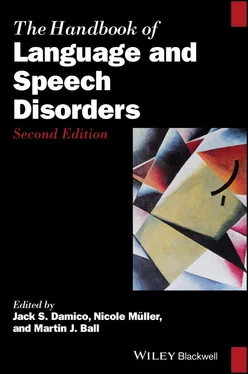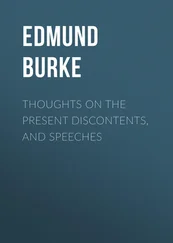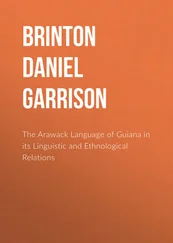100 Kavale, K. A., & Forness, S. R. (1998). The politics of learning disabilities. Learning Disabilities Quarterly, 21, 245–273.
101 Kavale, K. A., & Forness, S. R. (2000). Policy decisions in special education: The role of meta‐analysis. In R. Gersten, E. P. Schiller, & S. Vaughn (Eds.), Contemporary special education research: Synthesis of the knowledge base on critical instructional issues (pp. 281–326). Mahway, NJ: Lawrence Erlbaum Associates.
102 Kelly, N., & Norwich, B. (2004). Pupils’ perceptions of self and of labels: Moderate learning difficulties in mainstream and special schools. British Journal of Educational Psychology, 74(3), 411–435.
103 Kirk, S. A., & Kutchins, H. (1992). The selling of DSM: The rhetoric of science in psychiatry. New York, NY: Aldine de Gruyter.
104 Klasen, H. (2000). A name, what’s in a name? The medicalization of hyperactivity revisited. Harvard Review of Psychiatry, 7, 334–344.
105 Klassen, R., Tze, V., Betts, S., & Gordon, K. (2011). Teacher efficacy research 1998–2009: Signs of progress or unfulfilled promise? Educational Psychology Review, 23, 21–43.
106 Kliewer, C., Biklen, D., & Kasa‐Hendrickson, C. (2006). Who may be literate? Disability and resistance to the cultural denial of competence. American Educational Research Journal, 43(2), 163–192.
107 Kretschmer, R. E. (1991). Exceptionality and the limited English proficient student: Historical and practical contexts. In E. V. Hamayan & J. S. Damico (Eds.), Limiting bias in the assessment of bilingual students (pp. 1–38). Austin, TX: Pro‐Ed.
108 Kroska, A., & Harkness, S. K. (2008). Exploring the role of diagnosis in the modified Labeling theory of mental illness. Social Psychology Quarterly, 71(2), 193–208.
109 Kutchins, H., & Kirk, S. A. (1997). Making us crazy: DSM: The psychiatric bible and the creation of mental disorders. New York, NY: The Free Press.
110 Lemert, E. M. (1967). Human deviance, social problems, and social control. Englewood Cliffs, NJ: Prentice‐Hall.
111 Leyens, J. P., Yzerbyt, V., & Schadron, G. (1994). Stereotypes and social cognition. London, UK: Sage.
112 Link, B. G., Cullen, F. T., Struening, E., Shrout, P. E., & Dohrenwend, B. P. (1989). A modified labeling theory approach to mental disorders: An empirical assessment. American Sociological Review, 54, 400–423.
113 Lohman, D. (1997). Lessons from the history of intelligence testing. International Journal of Educational Research, 27, 359–377.
114 Loseke, D. R. (1999). Thinking about social problems. New York, NY: Aldine de Gruyter.
115 Lubinski, D. (2000). Scientific and social significance of assessing individual differences: Sinking shafts at a few critical points. Annual Review of Psychology, 51, 405–444.
116 MacWhinney, B.. (Ed.) (1998). The emergence of language. Mahwah, NJ: Erlbaum.
117 Madon, S., Hilbert, G. S., Kyriakatos, E., & Vogel, D. (2006). Stereotyping the stereotypic: When individuals match social stereotypes. Journal of Applied Social Psychology, 36(1), 178–205.
118 Magnuson, K. A., & Waldfogel, J. (2005). Early childhood care and education: Effects on ethnic and racial gaps in school readiness. The Future of Children, 15, 169–196.
119 Marshall, H. H. (1996). Implications of differentiating and understanding constructivist approaches. Educational Psychologist, 31, 235–240.
120 Matson, J. L., Kozlowski, A. M., Hattier, M. A., Horovitz, M., & Sipes, M. (2012). DSM‐IV vs DSM‐5 diagnostic criteria for toddlers with autism. Developmental Neurorehabilitation, 15, 185–190.
121 Matsueda, R. L. (1992). Reflected appraisals, parental labeling, and delinquency: Specifying a symbolic interactionist theory. American Journal of Sociology, 97, 1577–1611.
122 Matsueda, R. L. (2014). The natural history of labeling theory. In D. P. Farrington & J. Murray (Eds.), Labeling theory: Empirical tests (pp. 13–44). New York, NY: Taylor & Francis Group.
123 McDermott, R. (1987). Achieving school failure: An anthropological approach to illiteracy and social stratification. In G. D. Spindler (Ed.), Education and cultural process. Anthropological approaches (2nd ed., pp. 173–209). Prospect, IL: Waveland Press.
124 McDermott, R. (1993). The acquisition of a child by a learning disability. In S. Chaiklin & J. Lave (Eds.), Understanding practice (pp. 269–305). New York, NY: Cambridge University Press.
125 McDermott, R., & Varenne, H. (1995). Culture as disability. Anthropology & Education Quarterly, 26, 324–348.
126 McDonald, S. (2007). The social and neuropsychological underpinnings of communication disorders after traumatic brain injury. In M. J. Ball & J. S. Damico (Eds.), Clinical aphasiology. Future directions (pp. 42–71). New York, NY: Psychology Press.
127 McNamara, B. E. (1998). Learning disabilities: Appropriate practices for a diverse population. Albany, NY: State University of New York Press.
128 Mehan, H. (1996). The construction of an LD student: A case study in the politics of representation. In M. Silverstein & G. Urban (Eds.), Natural histories of discourse (pp. 253–276). Chicago, IL: University of Chicago Press.
129 Mehan, H., Hertwick, A., & Meihls, J. L. (1986). Handicapping the handicapped: Decision making in student’s educational careers. Palo Alto, CA: Stanford University Press.
130 Messick, S. (1980). Test validity and the ethics of assessment. American Psychologist, 35, 1012–1027.
131 Messick, S. (1984). The psychology of educational measurement. Journal of Educational Measurement, 21, 215–237.
132 Mills, J. A. (1998). Control: A history of behavioral psychology. New York, NY: New York University Press.
133 Morris, D. (1998). Illness and culture in the postmodern age. Berkeley, CA: University of California Press.
134 Müller, E., Cannon, L. R., Kornblum, C., Clark, J., & Powers, M. (2016). Description and preliminary evaluation of a curriculum for teaching conversational skills to children with high‐functioning autism and other social cognitive challenges. Language, Speech and Hearing Services in Schools, 47, 191–208.
135 Müller, N., & Schrauf, R. W. (2014). Conversation as cognition. Reframing cognition in dementia. In R. W. Schrauf & N. Müller (Eds.), Dialogue and dementia. Cognitive and communicative resources for engagement (pp. 3–26). New York, NY: Psychology Press.
136 Nelson, K. (2003). The emergence of a consciousness of self. In G. D. Fireman, T. E. McVay, & O. J. Flanagan (Eds.), Narrative and consciousness. Literature, psychology, and the brain (pp. 17–36). Oxford, UK: Oxford University Press.
137 O’Connor, C., & Fernandez, S. D. (2006). Race, class, and disproportionality: Reevaluating the relationship between poverty and special education placement. Educational Researcher, 35(6), 6–11.
138 O’Connor, M. C. (1998). Can we trace the “efficacy of social constructivism”? Review of Research in Education, 23, 25–71.
139 Ogbu, J. (1978). Minority education and caste: The American system in cross cultural perspective. New York, NY: Academic Press.
140 Ogbu, J. U., & Simons, H. (1998). Voluntary and involuntary implications for education. Anthropology & Education Quarterly, 29(2), 155–188.
141 Peña, E., Spaulding, T., & Plante, E. (2006). The composition of normative groups and diagnostic decision making: Shooting ourselves in the foot. American Journal of Speech‐Language Pathology, 15, 247–254.
142 Perkins, M. R. (2005). Pragmatic ability and disability as emergent phenomena. Clinical Linguistics and Phonetics, 19, 367–378.
143 Prior, M., & Sanson, A. (1986). Attention deficit disorder with hyperactivity: A critique. Journal of Child Psychology and Psychiatry, 27, 307–319.
144 Rapley, M. (2004). The social construction of intellectual disability. Cambridge, UK: Cambridge University Press.
Читать дальше












